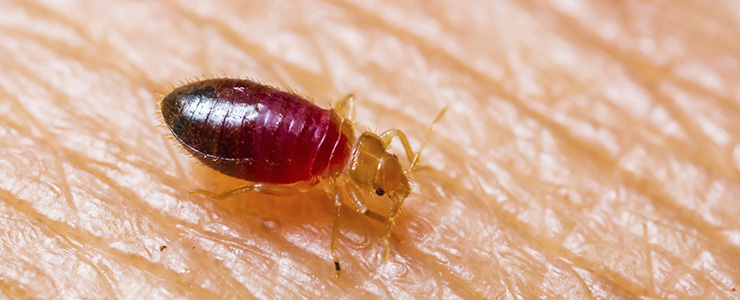Everything you need to know about bed bug bites.

Staying at a hotel can be scary enough. Especially if you are unsure if the place might have bed bugs. The small insects can easily transport back to your home on your luggage. One of the first signs of bedbugs is being bitten. First, you’ll have to be able to identify if it’s a bed bug bite or not.
What do bed bug bites look like?
Mostly, bed bug bites are red bumps similar to many other types of bug bites. It can be difficult to determine the likelihood of bed bugs compared to mosquito or flea bites. Everyone’s body reacts differently to insect bites. One person’s bed bug bite might look like a mosquito bite. While the other individual’s insect bites look different. In most cases bed bug bites appear in small groups in a single place usually found in a line. Multiple areas of bites means you could have a large infestation.
Where do bed bug bites appear?
- Head and face.
- Neck.
- Arms.
- Legs.
- Other places not covered by bedding.
Do bed bugs bites itch?
Swelling is the biggest indicators to bed bug and other insect bites. Swelling usually results in very itchy and irritated skin. Sometimes red welts can also develop. For some people bed bug bites don’t even leave a mark or itch.
A bite might feel like a slight burning around the area. This is usually early very soon after you’ve been bitten before bites develop red coloring as well as swelling and itchiness. In severe cases some victims might develop an allergic reaction to bedbug bites. This can cause a rash also known as papules or wheals. It can result in drastic swelling and blister-like skin inflammation.
What happens when a bed bug bites you?
Bed bug bites can vary depending on how the bug decides to bite you. Mostly, a bed bug pierces the skin with its elongated beak. Sucking your blood for about 3 to 10 minutes until they are full. A bed bug may also inject an anesthetic and an anticoagulant during the initial biting. This reduces itchiness while the bed bug is dining on your blood. Also, the anticoagulant stops the blood from clotting. You begin to feel itchy once the anesthetic wears off.
How to treat bed bug bites.
Mostly, bed bug bite treatment is quite simple and usually can be treated by applying an ice pack helping to reduce swelling. Also, taking an antihistamine. However, there are plenty of home remedies to help reduce uncomfort.
- Calamine lotion is used quite commonly in treating bug bites. It is a relief from itchiness and helps dry rashes helping to protect skin as it heals.
- Mix baking soda and water helps remove swelling. Applying it directly to the bite.
- Apple cider vinegar works well with most insect stings. It controls the itching.
- The menthol from toothpaste helps soothe any burning and relieve itching.
- Witch hazel contains a mild anesthetic effect calming itchiness.
- Aloe vera has active compounds and amino acids to easy burning and itching.
- Lemon juice dries out rashes, reduces itching, redness and swelling.
- Banana peel contains oils that help control itching and redness.
- Peppermint oil is similar to toothpaste. It works best to add a couple drops to a hot bath.
Signs of bed bugs.
- Blood stains on the sheet and pillow case.
- Dark or rusty spots of bedbug excrement on sheets, mattresses, bed clothes and walls.
- Bedbug fecal spots, egg shells, or shed skins in areas where bedbugs hide.
- A bad musty odour coming from the bug’s scent glands.
Goderich bed bug removal.
Bed bug infestations can quickly get out of control. They can come into your home attached to fabric such as your suitcase, clothes or bedding. If you discover any signs of bed bugs in your building make sure to contact Truly Nolen Pest Control.
